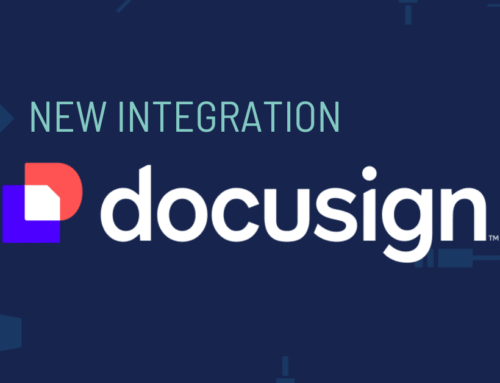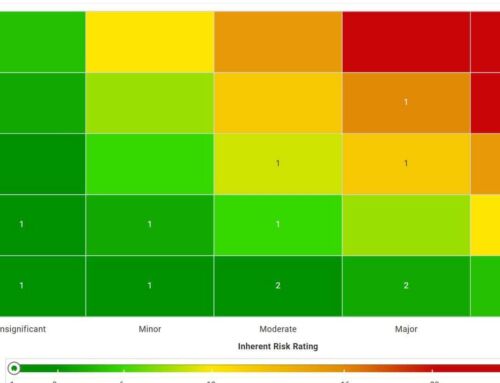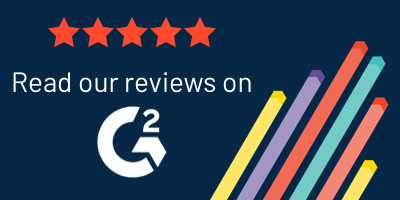Creating Your Vendor Management Policy
Your business relies on vendors for continuity, from service providers and raw material vendors to components and finished goods suppliers. If you don’t create an all-inclusive vendor management policy, you’ll be bogged down with unending third-party management chaos triggered by different vendors.
Some unscrupulous vendors may try to cut corners and deliver substandard services or products. Others may nickel-and-dime you on every unit purchase, and some may delay deliveries interminably or fail to secure your company’s sensitive information. In fact, research indicates that 98% of companies have had a breached relationship with a third-party vendor.
However, you can’t just accept such vendor setbacks as mere commercial risks. Instead, you should craft a vendor risk management policy that binds all third-party partners from the get-go. This way, you’ll avoid common third-party pitfalls like missed deliveries and have a well-thought-out mitigation plan for the unavoidable challenges beyond a vendor’s control.
Fortunately, this detailed guide will teach you all about creating a sustainable vendor management policy, the best practices to observe and how to maintain great vendor relationships—those nuanced relationships that secure goods and services in your overall third-party ecosystem of business partners, consultants, contract workers, etc.
What Is a Vendor Management Policy (VMP)?
A vendor management policy is a structured framework that companies leverage to assess a vendor’s capacity to deliver as well as their risk profile. You use a VMP as a benchmark to identify risky vendors, establish vendor management controls that mitigate possible risks and oversee compliance with pertinent frameworks like SOC 2, the Health Insurance Portability and Accountability Act (HIPAA) or other regulatory standards.
VMPs should be company-specific depending on the extent of vendor operations and risk levels an organization faces. For instance, companies in the healthcare industry must have extensive VMPs that outline protocols for handling and storing sensitive data in compliance with HIPAA.
The more detailed your VMP is, the safer it is for your organization because it will address more vendor activities and pinpoint the possible legal, operational, compliance, financial and strategic risks. This makes a VMP more of a strategic vendor repository than a tick-off template for qualifying and eliminating vendors.

Why You Need a Vendor Management Policy
Think about all the processes you undergo managing even one vendor relationship. You must conduct due diligence, assess risk, draft and review contracts, set goals and deliverables, authenticate compliance and data security protocols and onboard a vendor.
Because these processes repeat for every vendor, they become overwhelming if you don’t have a systematic execution approach. A VMP is a standard operating procedure for completing all vendor management processes and activities. This way, employees in every department involved in vendor relationships can reference the VMP and familiarize themselves with the processes involved.
Doing so synchronizes operations and communication because your employees and vendors collaborate efficiently. Besides harmonizing operations, other benefits of a VMP include the following.
Facilitates Continuous Vendor Negotiations
A VMP delegates vendor monitoring and management roles to specific individuals. When an employee or team is dedicated to vendor management, they can better negotiate with different suppliers and get competitive market rates.
Their constant interaction with vendors creates a good rapport, making negotiations and communication much smoother and more efficient. This way, your team can quickly negotiate better deals when they identify cost-saving opportunities.
Reduces Supply Chain Disruptions
A VMP establishes contingency plans to mitigate supply chain disruptions by providing a path for diversifying supplier sources. A dynamic VMP evaluates diverse risk management strategies and outlines practical mitigation measures that managers can activate to reduce the impact of supply chain disruptions.
Facilitates Data-Backed Decision Making
A VMP serves as a reference source for staff involved in vendor relationship management. It serves as a central repository for vendor data, allowing you to analyze this information and derive crucial insights about a vendor’s performance. You can reference this information when making vital decisions like extending a vendor’s contract.
Streamlines Compliance and Data Security Management
Your VMP outlines compliance and security standards that your staff and vendors must follow. When all vendor relationship owners, concerned stakeholders and vendors know the expected standards, they can easily collaborate to achieve compliance. Such a shared commitment to maintaining security and compliance standards makes vendor management seamless.
Minimizes Operational Costs
A solid VMP mitigates operational errors by making vendor management methodical. It guides organizations in achieving operational efficiency, which translates to using fewer resources to achieve more. This reduces vendor management operational costs in the short and long term.
Steps of Creating a Vendor Management Program
Establishing a robust VMP is a step-by-step process you should undertake diligently to get it right the first time. You can liken this process to oiling your car’s engine. If you use the right oil, your engine will give you a longer service life with fewer repair and maintenance demands down the road.
Similarly, if you create the right vendor management program from the get-go, you’ll enjoy smooth vendor relationships with fewer operational errors and course-correction demands. Here’s how to do it.
Gather the Right Internal Team
List down all the parties that will be involved in vendor management. Typically, they include:
- Relationship owners: These individuals serve as the main point of contact between your company and vendors. Whenever a vendor has any issue or your organization has problems with the vendor, the relationship owner/owners are responsible.
- Technical/professional support team: These are professionals from various departments such as IT, procurement, finance, accounting, compliance and HR. They offer fundamental professional support according to their niche to operationalize vendor management.
After assembling all the professionals needed, conduct a special skill-based training exercise to teach the core skills they need to execute their assigned roles. For instance, your IT expert should know the access level permissions to grant each individual in the vendor management team. Also, establish a separate communication channel for the team to facilitate effective discussions.
Assess Vendor Risk
Outline your vendor risk scoring framework, explaining the benchmarking factors you use to evaluate a vendor’s risk profile. These factors include:
- How much access a vendor has to items such as proprietary data or employees’, customers’ personally identifiable information (PII) or patients’ personal health information (PHI)
- A vendor’s current/historical financial and tax information
- A vendor’s geographic data to calculate risk from their physical locations (offshore/onshore disaster likelihood for primary and backup data centers and for evaluating business continuity)
- A vendor’s political and reputational standing
- A vendor’s cybersecurity capacity
- A vendor’s operational capacity
- Length and type of engagement
Most organizations grade a vendor’s risk profile into three tiers: high, medium or low. While your risk-scoring framework will update and transform continually as risk dynamics change, creating one gives you a blueprint that you can fine-tune to suit your evolving demands.

Create a Vendor Onboarding and Monitoring Plan
Onboarding entails integrating a vendor into your company’s system. From a cybersecurity perspective, it’s a sensitive process that you should only undertake after assessing a vendor’s risk and greenlighting it.
To make your onboarding plan successful, consider creating a dedicated onboarding sub-team from your vendor management team. This team, preferably with expert IT and compliance knowledge, should oversee vendor onboarding and subsequent monitoring processes.
Vendor Management Policy Template: Content To Include
The contents of a VMP vary amongst businesses depending on their unique operational organization. But while the content varies, it serves the same purpose — protecting your company against vendor risks. Even so, here are fundamental elements and sections common in a VMP:
- Policy purpose: It explains the reasons for crafting the VMP and what you aim to achieve with the policy.
- Policy scope and audience: It outlines all the vendors and third parties bound by the VMP and the pertinent requirements they must fulfill in critical areas such as data security, compliance and incident management.
- Roles and responsibilities: It allocates specific vendor management duties to individuals or teams and defines their functions.
- Vendor vetting approach: It explains your vetting methodology to qualify vendors before engaging them. It outlines particulars such as details of non-disclosure agreements and security audit techniques.
- Compliance management: It categorizes and prioritizes risks that your internal team and vendors should fulfill to meet compliance standards. It also provides an audit schedule to review vendor security to maintain compliance continuity.
- Policy enforcement: It outlines the implementation methodology and the consequences for non-compliance for vendors and your internal teams.
You can customize your VMP to suit your company’s operations and implement it differently as long as it fulfills your compliance and risk management deliverables.

Reliable Vendor Management Tips for Assessing New Vendors
Ultimately, you’ll polish your vendor management and assessment proficiency with time as you deal with more vendors. But before you develop your unique techniques, reference these tried-and-tested vendor assessment principles, particularly if you’re a startup.
Prioritize Vendors With the Potential To Scale
A vendor who can scale with your company will provide better business continuity in the future when you need bulk services or products. Such vendors should have the operational and infrastructural capacity to satisfy your present and future needs. A good way to gauge a vendor’s potential is by analyzing their existing clientele portfolio in your niche.
If a vendor serves bigger companies than your organization, it indicates they have the resources and experience to meet your company’s demands when growth snowballs. Also, such vendors are more likely to offer you better price points as they know your business’s growth stages and the associated challenges.
Don’t Settle Fast. Shop Around. Experiment with Free Trials or Product Samples
Contracting the first few vendors you find without comparing quotes can be counterproductive. You can forgo substantial cost-saving opportunities by not first comparing prices. Further, it’s a smart move to experiment with free trials and product samples so you get a first-hand experience of a vendor’s service or product before purchasing or entering into a contractual agreement. However, during any trial or test, ensure the required security controls are in place and, even then, use non-sensitive test data.
After a few trials, you’ll find the best-fit vendor who ticks all your boxes. At that point, you can go all in and retain the vendor for the long term, eventually establishing a solid business relationship. Having a strong vendor relationship has many perks, such as enjoying preferential rates.
Prioritize Vendors with Reliable After-Sales Support and Maintenance Services
Typically, after buying a new product or procuring new services, your staff will experience a buffer period before they polish up their user knowledge. During this time, there will be a lot of back and forth between your internal vendor management team and the vendor as they seek clarification on issues.
The ideal vendor should offer unrestricted technical support for an agreed-upon grace period before they start billing you. During that interval, your staff should become comfortable with the product/service and become productive.
Research a Vendor’s Reputation
As the reputation of good vendors precedes them, so do the unscrupulous ones. Fortunately, the internet and the interconnectedness of global commerce make verifying a vendor’s reputation easy.
You can leverage credible sites like Gartner Peer Insights, G2, Capterra and SoftwareReviews to review a vendor’s reviews. Also, inquire amongst your peers about their experience with your short-listed vendors. Keep off those with consistent negative reviews. The safest bet as reviews go is choosing one that has been reviewed and recommended by companies and professionals in your niche.
Prioritize Local Vendors
Local vendors near your business are better positioned to offer convenient after-sales support and maintenance services. One of the basic but key advantages over international vendors is the time zone. Sharing the same time zone streamlines communications and offers the convenience of in-person service and staff training.

3 Tiers of Vendor Relationship Management
Among the closing steps of a vendor management policy is creating a system of reviewing a vendor’s performance to achieve and sustain operational excellence. You can review your vendor relationships in three tiers or levels:
- Level 1: Ongoing operational review: Assess compliance with service level agreements and performance indicators.
- Level 2: Annual relationship review: Evaluate your organization’s satisfaction with the vendor and whether the vendor is enthusiastic about continuing with service delivery.
- Level 3: Cyclical contract and return on investment (ROI) review: Evaluate actual ROI growth triggered by the vendor relationship within the set period.
Automation for Vendor Relationship Management
Onspring has been among the top GRC software options in Info-Tech Research Group’s Leader Quadrant for five years running. The countless companies (startups and conglomerates alike) we’ve helped attest to our vendor relationship-building and management expertise. We’re happy to show you a demo today.





